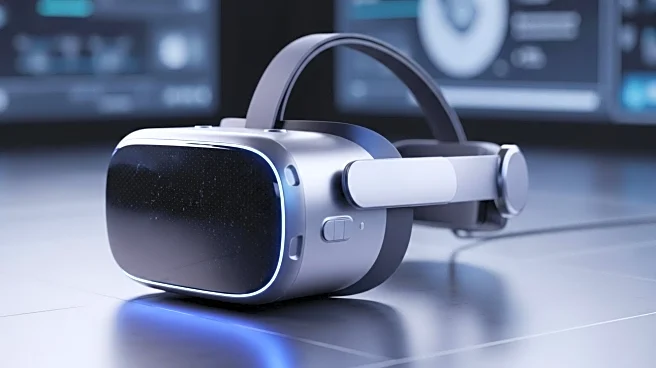What is the story about?
What's Happening?
Helsinki-based technology company Varjo has unveiled its updated XR-4 series mixed reality headset, designed for training applications across air, land, and sea. Announced in a press release on October 8, the refreshed headset features a redesigned headband and a new front plate compatible with SteamVR tracking. The XR-4 series allows pilots to interact with maps and avionics within cockpits in a simulated environment, enhancing training realism. The system incorporates eye-tracking data and predictive foveation technology, which anticipates user gaze direction and reduces latency. Additionally, the headset blends real hands with virtual objects, providing a seamless integration of physical and digital elements. The XR-4 series boasts ultra-high-resolution visuals, a wide field-of-view, and AI-enhanced image quality, supporting operational use through 2030.
Why It's Important?
The introduction of Varjo's refreshed XR-4 series headset represents a significant advancement in mixed reality technology for training purposes. By enabling realistic interaction with virtual environments, the headset enhances the effectiveness of training for pilots and other personnel, potentially reducing costs and improving safety. The integration of real-world elements with virtual simulations offers a more immersive experience, which can lead to better skill acquisition and retention. This development is crucial for industries that rely on precise and realistic training, such as aviation and defense, where the ability to simulate complex scenarios can improve preparedness and operational efficiency.
What's Next?
Varjo's XR-4 series headset is expected to continue evolving with technological advancements, particularly in AI and mixed reality applications. As the headset supports operational use through 2030, ongoing updates and improvements are likely to enhance its capabilities further. Stakeholders in the aviation and defense sectors may explore additional applications for the technology, potentially expanding its use beyond training to include operational support and mission planning. The continued integration of AI could lead to more sophisticated simulations, offering even greater realism and utility.
Beyond the Headlines
The deployment of Varjo's XR-4 series headset may influence broader trends in mixed reality technology, encouraging other companies to innovate and develop similar solutions. The ethical implications of blending real and virtual environments, particularly in training scenarios, could prompt discussions on the balance between technology and human interaction. Additionally, the long-term impact on workforce training and development may lead to shifts in educational approaches, emphasizing virtual and mixed reality as essential tools for skill acquisition.
AI Generated Content
Do you find this article useful?
















